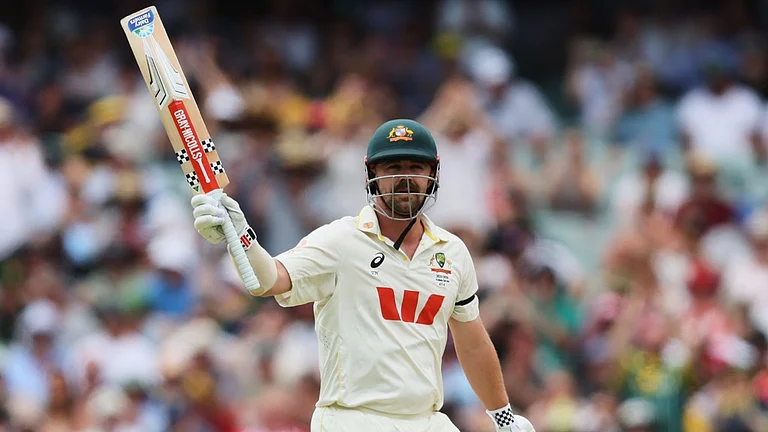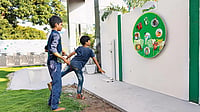Note: In the wake of the Hathras gangrape and murder verdict, Outlook is revisiting its coverage of the Hathras tragedy, complex caste dynamics of gender violence and the erasure of evidence as truth.
A metal pitcher, its shine dulled over time, sits in one corner of the room. It is the same room which was once hers. Now only her ashes remain. She was just 19 when she died, a fortnight after she was gang-raped, allegedly by four upper-caste men of the village—Bulgarhi in Uttar Pradesh’s Hathras district. The youngest among five children of the Dalit family, she was the family’s princess. Her grieving father now has only one wish. To complete the customary immersion of his daughter’s ashes in the holy river, to ensure her soul achieves salvation. But that will have to wait. “We will not immerse the ashes in the Ganga till the time we get justice. We want all the accused hanged,” he says.
In the modest two-room, brick-and-mortar house of the family—now protected round-the-clock by a team of CRPF personnel—time stands still. And memories of the woman brutalised while collecting fodder for their cattle continue to haunt the living. Left severely paralysed after the sexual assault, the woman passed away at a Delhi hospital on September 29, 2020. Local police cremated her body the same night, allegedly without informing the family, sparking nationwide anger and indignation over the insensitive handling of the case. Subsequently, the case was handed over to the CBI. All four accused are now in jail pending trial. Family members say they were not even allowed a last look at her remains.
But her memories remain around the house. Like the tulsi sapling she had collected from a local field where the holy basil grows in the wild. She was 16 then. The Dalit girl had planted the sapling in the courtyard of her house, hoping that the plant considered divine by millions will keep her family safe from misfortune and also bring good health. The sapling is now a leafy, full-grown plant, standing proud in the middle of the courtyard. A piece of red cloth with golden borders—a chaddar offered to the mother goddess—lies draped over the plant. “It gives us a feeling that she is still around,” says the 52-year-old father of the woman. “Do you know why the tulsi reminds us so much of her? It is not just because she had planted it. It is because it seems that my daughter sends us a message that she is with us,” he adds. The names of family members cannot be divulged as the Supreme Court has barred media from publishing their names, photographs and videos to protect the victim’s identity.
The mother points to a green-and-red saree hanging from a clothesline on the veranda—the same saree she was wearing the day the news of her daughter’s death reached the family. The piece of cloth remains a reminder of the day the world came crashing down on the family.
The Hathras incident had also exposed, once again, the stark reality of India’s social hierarchy where the so-called lower castes constantly face physical and mental trauma at the hands of the powerful people belonging to the upper castes. In Bulgarhi, where the upper castes are in the majority, sentiments are overwhelmingly in favour of the accused. And most people believe that they have been framed for a crime they didn’t commit. Munna Singh Pudir, the lawyer for the accused, says there is no evidence against the four men. “It is a case of media trial. The girl had an affair with one of the accused. There are records of 104 calls between them which prove the relationship.”
The family of the woman, however, says the lower castes have always faced discrimination in the village. “Even before the incident, we had to sell the milk from our buffaloes in other places as the upper caste people won’t buy from us. Shopkeepers refused to take back any items we wanted to return for some reason,” says the 29-year-old elder brother of the victim.

The Hathras victim’s mother at their residence in Bulgarhi
A 120-member CRPF team takes turns in six-hour shifts—at least 20 are on duty at any point in time—to provide security to the family. The security is even suffocating at times. “It is like a prison. Where is our freedom? Look at the irony. The accused families are free to move around while we are in confinement,” the father says. The male members of the family no longer go out for work. And the only time anyone steps outside is to buy ration from a nearby store. “I was working in a school. Both my sons were working in Delhi-NCR but after the incident, they came back. Since we don’t work, there is no source of income. We are surviving on a Rs 25-lakh compensation from the government,” the father adds.
The family says that despite the media spotlight and national attention to their case, there has been no let-up in cases of rape and violence against Dalit women. “There are at least three such cases in other villages in the district in a span of one year since my sister met a cruel end,” the brother says.
Activists and experts also point out that the stringent laws enacted after the 2012 Delhi gang rape and murder of a woman have done little to prevent such cases. “The justice delivery system is failing. The lack of judgments from the courts is creating an atmosphere that the law is not acting as a deterrent,” says Dr Ranjana Kumari, director of Centre for Social Research. “In the Hathras case, an FIR was not lodged for ten days. There are many lapses in the case. All sorts of stories were floated…that it was not a gang rape and it was a case of honour killing,” she adds.
She also dismissed recent data of the National Crime Record Bureau (NCRB) which suggest an 8.3 per cent decrease in crimes against women in India. “Due to Covid and lockdown, many women couldn’t come forward to report cases and that’s the reason NCRB data shows a decline in cases. There is no let down in crime against women,” she says.
Social activist Yogita Bhayana says Dalit women are more vulnerable to atrocities by upper castes. “There are many cases happening in the country but they go unreported because a Dalit family doesn’t muster the courage to stand up against a powerful community if the accused belongs to that community,” she adds.
However, not all lower caste families in the village agree to the allegation of exploitation. There are three more families of a backward class in this village with an estimated population over 600. “It is true that we are untouchables and the upper caste people don’t take anything from us but it is incorrect to say that our women are under threat all the time whenever they go out,” says a villager of a backward class. Outlook tried to speak to the family of the accused but they refused to comment.
For the victim’s family, if the present is troubling, the future appears scarier. “We are concerned about our future,” says the younger brother of the victim. “We won’t get lifelong security. Once the case is over, it will be withdrawn. What happens after that? Do you think we can live here?”
(This appeared in the print edition as "Hathras Beyond Headlines")
By Jeevan Prakash Sharma in Bulgarhi, Hathras


























